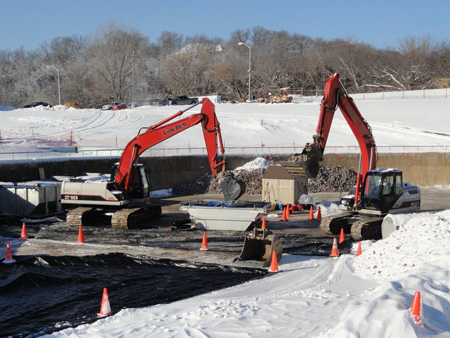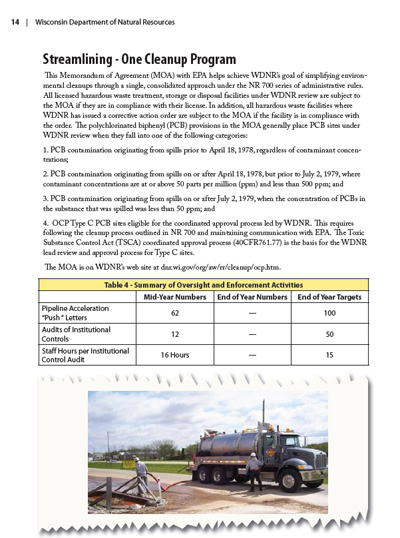Investigators zero in on cause of blast at mercury plant
Lithium batteries apparently were put in furnace
HELENA D. GEIER Special to the Journal Sentinel
Published: November 8, 1998
Lithium batteries mistakenly put inside an oven with other materials are the likely cause of an explosion Oct. 14 at the Mercury Waste Solutions plant, according to a state Department of Natural Resources official. Meanwhile, the company is continuing to clean up after the blast and hopes to reopen this week.
After a seal on a recovery equipment door blasted open, the plant was evacuated and the DNR recommended that the plant be shut down until the results of an investigation are known, said Tim Kennedy, waste management specialist with the DNR.
“The company said it was their belief that lithium was mistakenly placed in a load, and that’s what exploded,” Kennedy said. “(The batteries) shouldn’t have been in there. It does look like that’s what caused the explosion.”
The federal Occupational Safety and Health Administration also is conducting an investigation, Kennedy said.
The plant, which has been open since 1996, separates waste from household, medical and industrial products that contain mercury.
Ovens are used to “cook” the waste, and the captured mercury is recycled, according to a statement released by the firm.
The firm hired a private contractor to do an initial decontamination to bring down the mercury levels at the plant and continued cleanup of the site after workers were allowed back in, Kennedy said.
Kennedy said he and other DNR officials have had several meetings with company representatives and have received data from the firm regarding the incident.
The firm has been cooperative, he said.
Kennedy said he had made requests for more specific data.
“The company is looking at the mistakes that were made and what they need to do to correct that in the future,” he said. “They haven’t been retorting since the incident. We recommended that they not operate. We need to get a good idea of what the cause was and ensure that they have taken steps for prevention.”
Besides asking for immediate changes in procedures at the plant, the DNR is requesting the firm do an audit of operations to make sure they’re operating safely.
“That’s above and beyond the code but we feel it’s necessary to ensure they are operating safely,” Kennedy said.
The DNR has also asked that the firm do continuous monitoring of the air outside the plant and will be following up on its ongoing testing, Kennedy said.
The Racine County Health Department has provided data from monitoring meters operating outside the plant the day of the explosion.
David Maack, of the department’s Emergency Management division, said he notified the DNR of the incident because he wanted to be assured that there would not be any health concerns as a result of mercury being released into the air.
The readings from those meters “weren’t any readings that caused concern for an off-site release,” Maack said, noting that if there were any concern that particles were drifting away from the plant, the surrounding area would have been evacuated.
Maack said he also asked the DNR to take soil samples because had there been an airborne release of mercury vapor it would settle on the ground. The results of those tests are not yet available.
While the DNR continues to investigate, company officials hope to reopen the plant this week. It is not yet known whether the DNR will take any enforcement action, Kennedy said.
Included in the investigation is the review of two fires that occurred at the plant on Aug. 30 and July 30.
“The fact that there have been three fires in the past three months makes you concerned. You wonder if there’s a pattern,” Kennedy said. “We’re looking at the issues that led to those as well as this incident. We requested them to look at their operation and the changes to be made.”
He said company and fire department reports indicate that the fires may have been caused by the failure of a valve in a piece of equipment that allows air into an oven.
“The valve failed, and that failure caused the plant’s collection system to get clogged up,” Kennedy said. “And similar to a wood stove, if there were a plug in the chimney, the smoke has to go back out the front,” meaning back into the plant, Kennedy said.
The firm has made some changes to address that problem, including putting in place plans to reroute the venting of one furnace to another should a similar incident occur, Kennedy said.
The Union Grove plant handles the majority of the company’s mercury recycling processing. The local facility, one of five operated by the Mankato, Minn., based company, occupies 25,000 square feet and employs 18 people from the community.
In addition to batteries, some of the everyday products the company processes for recycling are fluorescent and high-intensity lamps, thermometers and thermostats.
Mercury Waste Solutions provides services to public utilities, electrical contractors, hazardous waste management companies and chemical manufacturers throughout the country.
Copyright 1998 Journal Sentinel Inc








